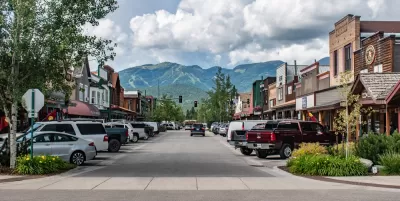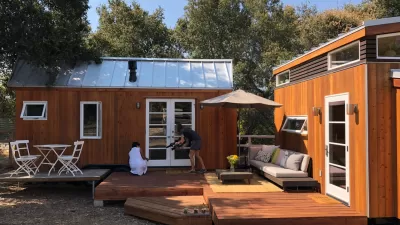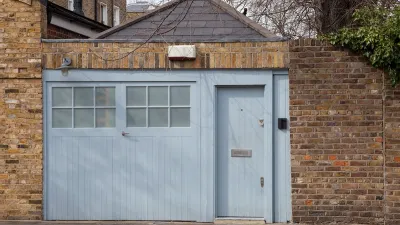Recently approved revisions to the city’s accessory dwelling unit regulations prioritize long-term rentals to increase housing affordability for local renters.

In May, the Whitefish, Montana city council took a step to address the city’s lack of affordable rental units, writes Nathan Dugan, President of Shelter Whitefish, in the Whitefish Pilot, in an opinion piece supporting the new regulations.
“On a 4-1 vote, the council passed a new accessory dwelling unit (ADU) ordinance that will serve to provide homes that meet the needs of many renters in Whitefish, including teachers, firefighters, bartenders, and many others who are struggling to find affordable housing options close to work, play, and social lives.” Starting on June 16, ADUs can be built in all zoning districts without requiring a conditional use permit (CUP).
“Additionally, the new ordinance re-legalizes the long-term rental of the ADU regardless of the owner’s residency. In a town that is already inundated with out-of-state investment and primary homes that sit vacant most of the year, this is an incredibly important step to unlock housing choices for renters close to our downtown core — where they can easily avoid becoming a part of the traffic problem on the way to work, play or school.” The ordinance additionally incentivizes renting to long-term residents. “In exchange for a minimum of five years of long-term renting via 12-month leases and no more than 30 days of vacancy between leases, a homeowner will be allowed to build an ADU up to 800 square feet without building an additional and expensive parking space, and will be eligible for financial incentives like impact fee reimbursement.”
The ordinance also eliminates the requirement that ADUs be located above a garage, a motion that Dugan supports. “These low-impact and modest buildings will continue to maintain the visual character of our neighborhoods while preserving the mixed-income “people character” that makes Whitefish the welcoming small town that we all love, and that many of us moved here to be a part of.”
FULL STORY: Opportunity for neighbors, not developers, to build homes in Whitefish

Planetizen Federal Action Tracker
A weekly monitor of how Trump’s orders and actions are impacting planners and planning in America.

Maui's Vacation Rental Debate Turns Ugly
Verbal attacks, misinformation campaigns and fistfights plague a high-stakes debate to convert thousands of vacation rentals into long-term housing.

San Francisco Suspends Traffic Calming Amidst Record Deaths
Citing “a challenging fiscal landscape,” the city will cease the program on the heels of 42 traffic deaths, including 24 pedestrians.

Amtrak Rolls Out New Orleans to Alabama “Mardi Gras” Train
The new service will operate morning and evening departures between Mobile and New Orleans.

The Subversive Car-Free Guide to Trump's Great American Road Trip
Car-free ways to access Chicagoland’s best tourist attractions.

San Antonio and Austin are Fusing Into one Massive Megaregion
The region spanning the two central Texas cities is growing fast, posing challenges for local infrastructure and water supplies.
Urban Design for Planners 1: Software Tools
This six-course series explores essential urban design concepts using open source software and equips planners with the tools they need to participate fully in the urban design process.
Planning for Universal Design
Learn the tools for implementing Universal Design in planning regulations.
Heyer Gruel & Associates PA
JM Goldson LLC
Custer County Colorado
City of Camden Redevelopment Agency
City of Astoria
Transportation Research & Education Center (TREC) at Portland State University
Jefferson Parish Government
Camden Redevelopment Agency
City of Claremont





























